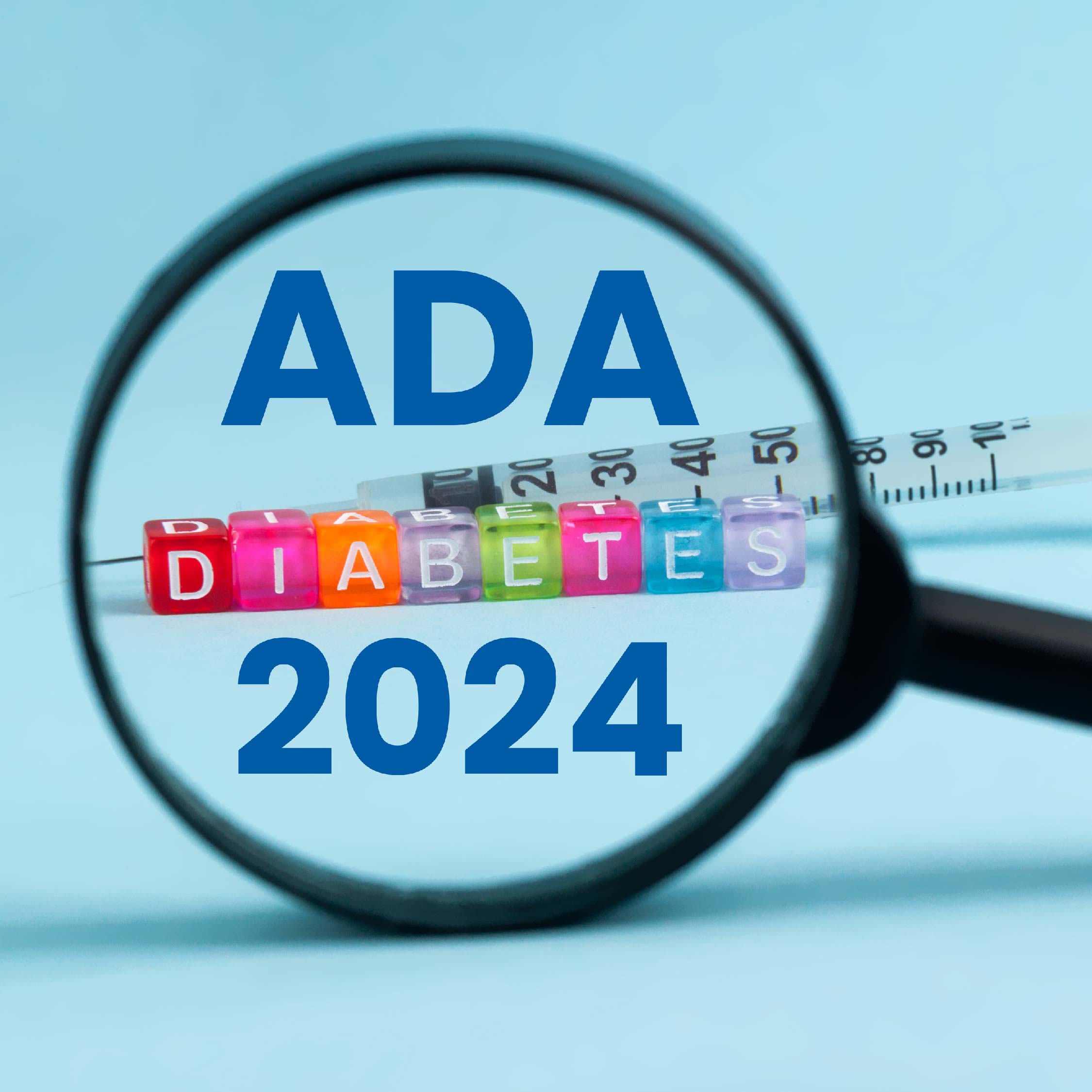ADA 2023: Coordinate—Diabetes Study Results Symposium
Study background- Jennifer B.Green
Atherosclerotic CVD (ASCVD) is a leading cause of death in adults with type 2 diabetes. Traditional risk reduction strategies such as control of blood pressure, lipids and hyperglycemia have reduced the rate of many serious complications in diabetes, however, the numbers of events have not. Diabetes, cardiovascular and kidney disease coexist frequently. The presence of more than one condition increases the risk of adverse outcomes. These risks are not fully addressed via traditional risk reduction strategies. High intensity statins, ACE inhibitors/ARBs, SGLT2i/GLP1-RAs are proven to reduce CV risk among patients with T2DM, however, these are substantially under-used in clinical practice. A study by Nelson et al showed that among 155,958 commercially insured patients with T2DM and ASCVD, 24.7% were on high-intensity statin, 53.1% were on ACE/ARB and 9.9% were on SGLT2i or GLP-1RA. There were 2.7% on all 3 groups of therapies, and 37.4% on none of these groups of therapies. Guidelines from professional societies recommend each of these therapies for adults with type 2 diabetes and ASCVD.
Trial design and conduct- Neha Pagidipati
The objective of the study was to test the impact of a clinic-level, multifaceted intervention on the prescription of 3 key groups of evidence-based therapies. Patients with T2D and ASCVD were included from Cardiology clinics in US. Patients from 20 clinical sites were given multifaceted intervention while patients from 23 sites received usual care and 6-12 month follow up was done. The multifaceted intervention included assessment of local practices and barriers, development of strategies to overcome those barriers and audit and feedback of quality metrics. The primary outcome was proportion of individuals achieving society and guidelines recommended management for T2DM and CVD at the last follow-up visit for all of the three therapies- high intensity statin like Atorvastatin 40-80 mg daily or rosuvastatin 20-40 mg daily, ACEi or ARB, antihyperglycemic agent with CV benefit like SGLT2i, GLP1-RA, acceptable alternative would be metformin monotherapy with HbA1c<7%. The secondary outcome was proportion of individuals receiving each group therapies, proportion of individuals achieving a composite score of >2. The intermediate outcomes included change from baseline: sBP, dBP, HbA1c, LDL-C. The clinical event outcomes included composite of all-cause death, hospitalization for MI, stroke, decompensated heart failure, or urgent revascularization. The primary and secondary outcomes were analyzed using a mixed model for repeated measures model, accounting for clustering effect and with adjustment for baseline factors as potential cofounders. Clinical event outcomes were analyzed using a multivariable Cox proportional hazards model.
Patient tracker, site and patient characteristics- Adam Nelson
Around 43 traditional cardiology clinics were enrolled for this study with an average of 24 patients per clinic. Median age of the patients was 69 in intervention group and 71 in usual care group. Around 31 % and 32% were females in intervention and usual care group respectively. Majority of the patients were white, however, some Black and Asians were also included. The patients who were insured were included, out of which the majority were insured with medicare. Patients also had prior co-morbidities like coronary artery disease (80%), hypertension, peripheral arterial disease(14%), dyslipidemia, heart failure (27%) and diabetic complications like DKA, retinopathy, neuropathy, gastroparesis.
COORDINATE-Diabetes: Results- Christopher Granger
1049 participants were enrolled (459 at 20 intervention clinics and 590 at 23 usual care clinics). At the last follow-up visit (12 months for 97.3% of participants), those in the intervention group were more likely to be prescribed all 3 therapies (173/457 [37.9%]) vs the usual care group (85/588 [14.5%]), which is a difference of 23.4% (adjusted odds ratio [OR], 4.38 [95% CI, 2.49 to 7.71]; P < .001) and were more likely to be prescribed each of the 3 therapies (change from baseline in high-intensity statins from 66.5% to 70.7% for intervention vs from 58.2% to 56.8% for usual care [adjusted OR, 1.73; 95% CI, 1.06-2.83]; ACEIs or ARBs: from 75.1% to 81.4% for intervention vs from 69.6% to 68.4% for usual care [adjusted OR, 1.82; 95% CI, 1.14-2.91]; SGLT2 inhibitors and/or GLP-1RAs: from 12.3% to 60.4% for intervention vs from 14.5% to 35.5% for usual care [adjusted OR, 3.11; 95% CI, 2.08-4.64]). The intervention was not associated with changes in atherosclerotic cardiovascular disease risk factors. The composite secondary outcome occurred in 23 of 457 participants (5%) in the intervention group vs 40 of 588 participants (6.8%) in the usual care group (adjusted hazard ratio, 0.79 [95% CI, 0.46 to 1.33]).
It was concluded from the study that a coordinated, multifaceted intervention increased the prescription of 3 groups of evidence-based therapies in adults with T2DM and ASCVD The clinical implications from the study were that evidence-based therapies are under-used in clinical practice, and there is little high-quality data on how to improve this. This multifaceted intervention is effective in increasing the prescription of evidence based therapies in adults withT2DM and ASCVD. The next step is to scale this intervention across cardiology practices in order to improve the quality of care being delivered broadly. Some of the limitations of this study were that selected sites and patients may not be representative of the broader US or international population, focus was on cohort rather than the entire clinic population and because of the COVID pandemic, the intervention was delivered remotely and was thus less intensive than originally designed.
Endocrinology perspective- Ildiko Lingvay
The prescription gap is also very high for people who are seen in Endocrinology or primary care (approximately 75% of patients are not prescribed), which includes patients with type 2 diabetes and either of the following: ASCVD, HF or CKD. The key to this multifaceted intervention was the three pronged approach- clinician, patient and the system. There is a holistic person-centered approach to type 2 diabetes management that includes weight management, medication for glycemic management, cardiorenal protection and cardiovascular risk factor management. Diabetes management is a team based care and it is necessary for other specialities to actively encourage patients to start such agents. The intervention tested can be extrapolated to any specialty and everyone involved in the care of these patients is responsible for ensuring best care practices are followed.
Key takeaways and future directions- Mikhail Kosiborod
Cardiometabolic disease is a huge public health threat. Cardiovascular disease and DKD are the two of the most common and morbid complications of T2D. The goals of care in cardiometabolic disease include prolong life, keeping patients out of hospital and improving the quality of life and these are best accomplished by preventing morbid complications. Some of the barriers for effective preventive care include high cost and lack of access and lack of effective clinical care models. The results from this study indicate that addressing systemic barriers can reduce clinical inertia and improve prescription rates. There is a fundamental paradigm shift in the management of cardiometabolic diseases. Many disease-modifying therapies are under-used in high risk patients. The shift in focus to comprehensive risk reduction is needed and is endorsed by all major guidelines. However, the implementation into clinical practice has been slow. Coordinate-Diabetes, CMCA and other initiatives signal the beginning of care transformation.
83rd scientific sessions of American Diabetes Association (ADA), San Diego, 23-25 June, 2023



